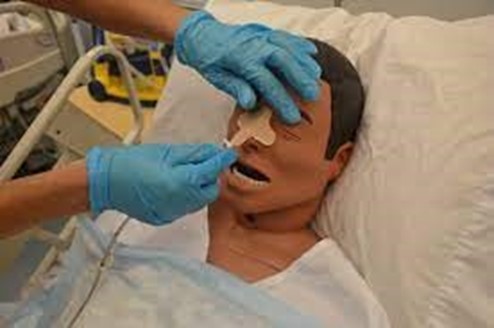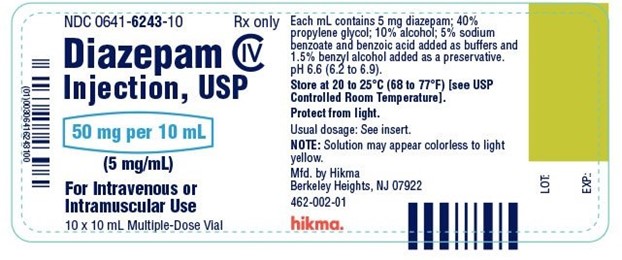A nurse is caring for a client who has a sealed radiation implant.
Which of the following actions should the nurse take?
Limit family member visits 30 min per day.
Give the dosimeter badge to the oncoming nurse at the end of the shift.
Apply a second pair of gloves before touching the client's implant if it dislodges.
Remove soiled linens from the room after each change.
The Correct Answer is A
This statement indicates that the nurse understands the importance of limiting the exposure of family members to radiation from the sealed implant.
Choice B is incorrect because the dosimeter badge should not be given to the oncoming nurse at the end of the shift.
The dosimeter badge is used to measure an individual’s exposure to radiation and should be worn by the same person throughout their shift.
Choice C is incorrect because if the client’s implant dislodges, the nurse should not touch it with their hands, even if they are wearing gloves.
The nurse should follow the facility’s protocol for handling dislodged implants.
Choice D is incorrect because soiled linens from a client with a sealed radiation implant do not need to be removed from the room after each change.
The linens can be handled according to standard precautions.
Nursing Test Bank
Naxlex Comprehensive Predictor Exams
Related Questions
Correct Answer is D
Explanation
The nurse should plan to insert a large-bore nasogastric tube for a client who has upper gastrointestinal bleeding due to a peptic ulcer.

This allows for gastric lavage and can help diagnose the source of bleeding.
Choice A is wrong because a 22-gauge IV line may be too small for rapid fluid resuscitation.
Choice B is wrong because ketorolac is a nonsteroidal anti-inflammatory drug (NSAID) that can increase the risk of gastrointestinal bleeding.
Choice C is wrong because nitroprusside is a vasodilator used to treat hypertensive emergencies and is not typically used for upper gastrointestinal bleeding.
Correct Answer is B
Explanation

The priority intervention for a nurse planning care for a client who has status epilepticus is to administer diazepam intravenously to the client.
Diazepam is a benzodiazepine medication that can help stop seizure activity and is often used as a first-line treatment for status epilepticus.
Choice A is incorrect because while phenytoin can be used to treat seizures, it is not typically used as a first-line treatment for status epilepticus.
Choice C is incorrect because while providing oxygen can be an important intervention for clients experiencing seizures, it is not the priority intervention.
Choice D is incorrect because while turning the client to the lateral position during seizure activity can help prevent aspiration, it is not the priority intervention.
Whether you are a student looking to ace your exams or a practicing nurse seeking to enhance your expertise , our nursing education contents will empower you with the confidence and competence to make a difference in the lives of patients and become a respected leader in the healthcare field.
Visit Naxlex, invest in your future and unlock endless possibilities with our unparalleled nursing education contents today
Report Wrong Answer on the Current Question
Do you disagree with the answer? If yes, what is your expected answer? Explain.
Kindly be descriptive with the issue you are facing.
